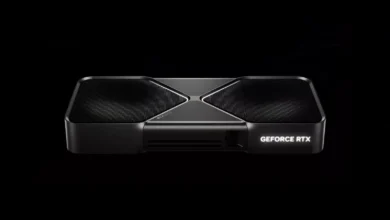AMD’s RDNA4: The Critical Path Forward
Today we’re going to dive deep into probably the most crucial challenge AMD has faced in years – how they can compete with NVIDIA’s absolutely monster RTX 50 series lineup. After NVIDIA’s CES announcements and some very interesting leaks about AMD’s upcoming cards, we’re finally getting a clearer picture of what this battle is going to look like, even if you don’t agree with the 50 series or the current pricing as regardless, they are still selling out faster than they can come in, and that could spell trouble for AMD with the upcoming 9000 series of Radeon GPUs, so today, we’re going to break down exactly what AMD needs to do to stay competitive.
Before we dive into the technical aspects, we need to face some brutal market reality here. These numbers from JPR tell a story that AMD probably doesn’t want to hear – their discrete GPU market share has plummeted from 17% to just 10% in the past year, while NVIDIA has climbed to a staggering 90% dominance of the market. This isn’t just a temporary blip – it’s a trend that’s been accelerating, and it makes the recent RDNA4 retail listing debacle even more concerning. When you’re sitting at just 10% market share, you can’t afford the kind of uncertainty that comes with listing products and then pulling them back. Every misstep just reinforces NVIDIA’s top market position.
This market reality changes everything about AMD’s strategy. Remember when we talked about them needing to price 25% below NVIDIA? Well, with these market share numbers and the recent launch confusion, even that might not be enough. We’re potentially looking at needing 30-35% price cuts just to get gamers to consider switching from NVIDIA and here’s the really concerning part – this market share drop happened despite AMD already pricing their RDNA3 cards 20% below NVIDIA’s offerings. If that level of discount couldn’t maintain market share, and now they’re showing signs of launch instability with RDNA4, then AMD needs to completely rethink their approach.










What do I think? Well, I think that it's worth waiting a couple of days for the AMD announcement, and then a few more days for reviews. Speculation is nice and all, but we're close enough to the launch that large parts of this article will become irrelevant. Once we get answers to the questions this article raises, then it will be time for a real opinion piece about what AMD offers.
(Of course, there's the chance that you're writing this based on review samples and information that you can't publicly disclose, and just phrasing facts as questions, but even if that's the case, I certainly have no access to such data, and would therefore prefer to not make up my mind before I see the facts.)